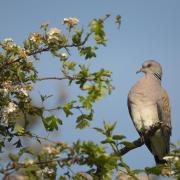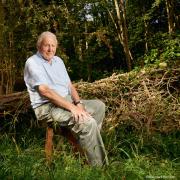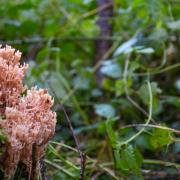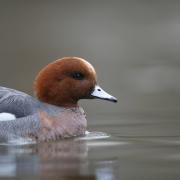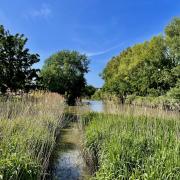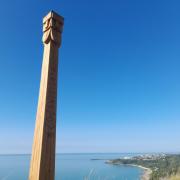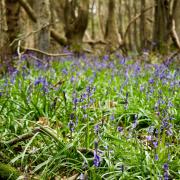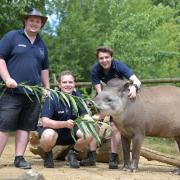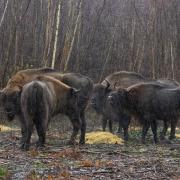Dungeness is unique: no boundaries, a desolate landscape with wooden houses, power stations, lighthouses and gravel pits. Yet it possesses a rich, diverse wildlife in one of the world’s largest shingle landscapes

To many people, Dungeness is just a flat, wide no-man’s-land, jutting out to sea beyond Romney Marsh. The only features worth noting seem to be the nuclear power stations and the pair of lighthouses.
But it’s not the whole story. Dungeness has a vast expanse of shingle which has been described as “the last natural undisturbed area in the south east and larger than any similar stretch of land in Europe.”
Because of this, its significance for nature conservation is immense.
“People think that if an area doesn’t have many trees, it can’t be worth much,” says Louise Kelly, visitor experience officer of the RSPB reserve, which stretches for 988ha across the shingle to the east of Lydd.

“The landscape is very flat, but there’s much more to it than immediately meets the eye. If you take your time to look around, you will find there is a lot to discover.”
The pebbled terrain of Dungeness was built up by the action of the sea across thousands of years. In time the build-up of shingle would have formed a barrier against the waves, enabling farmers coming across off the marsh to graze their livestock in grassier areas.
It also created suitable conditions for highly site-specific flora, able to thrive in such a harsh, bare, windswept location, and a rich array of invertebrate life, including bumblebees as well as moths.
One speciality is the Sussex Emerald Moth, a night-flying green moth. Dungeness is the only known place in Britain where it is found, due to the existence here of the wild carrot, a rare plant of shingle locations.

Above all, however, Dungeness is an enormous bird territory, a vitally important breeding ground, and a refuelling stop-off point and temporary home for annually migrating species, heading both north and south. As such it has birdwatching interest all year round. The reserve is the oldest of all those owned by the RSPB, opening in the 1930s. “Others which were acquired earlier no longer exist,” explains Louise.
“For many years, people would come here to steal the birds’ eggs, so at the start of the last century, a group of watchers was formed to look after the birds breeding on the shingle.
“In 1905, they managed to get statutory protection for the site, before the RSPB eventually bought it. But in the Second World War it was handed over to the Ministry of Defence, who used it as a firing range. It was then given back to us in 1952.”
The tanks’ tracks from those wartime years are still visible in the landscape, an example of how perfectly this area offers one of the key things needed for nature to thrive, stability.

And while there has also been a long history of gravel extraction at Dungeness, the RSPB wardens also work to shape the landscape in nature’s favour, creating pits in the natural acquifer to form ponds, lakes or wetland areas for seabirds and wintering wildfowl, and even for a healthy colony of rare great-crested newts.
The RSPB has just acquired a new segment of land called Lade Pits, handed over to them from Cemex when they left after 15 years of quarrying at Dungeness.
Burrowe’s Pit, the vast lake you can see from the window of the well-stocked Visitors’ Centre, has been managed for rare wildlife and, as a result, half the population of the threatened Mediterranean Gull use the site.
On the day of my visit, as well as shoveler ducks, there were large numbers of gleaming black cormorants and, on the far bank, a great white egret.

These beautiful, angular birds were extremely rare in Britain just a couple of decades ago but, along with the closely related little egrets and cattle egrets, which can also be seen at Dungeness, have been steadily making a comeback in Britain.
I was lucky enough to take a walk round the reserve with Louise and Sara Humphrey, an RSPB communications officer for the south-east region. If your bird-identification skills are shaky, or if it’s your first visit to the reserve, booking into one of their regular events is a good way of acquiring basic skills.
Among the most popular events, according to Sara, are the series of Bittern Breakfasts which take place in April. Bitterns are another species which, once in decline, have made a notable comeback lately, and which nest and hunt in the reserve’s reedbeds. “There are at least two booming males here, and although they boom all day, the best time to hear them is during the dawn chorus. So these events involve a two-mile walk at about 7am in the morning out to the reed beds, and then you come back to the visitor centre for a slap-up breakfast and browse the shop.”
It’s one thing hearing a bittern, but seeing one of these secretive creatures is tricky, and we’re unsuccessful on our walk. What we do see, however, are quite a few marsh harriers, flying low and slow over open marshland.

Although the air has a salty tang, all the ponds and lakes on the reserve are freshwater, brought to the surface when the diggers of the gravel pits hit the underground aquilifers.
The wind is pretty incessant, but on the day of my visit, not punishingly so, and as we wander off the wooden boards which lead over the shingle and onto the grassy pathways that weave their way in between the thick, sheltering clumps of ancient gorse, it’s incredibly invigorating.
Every so often we come to one of the wooden hides which, low in profile and discreetly hidden behind the reeds, enable us to get as close as reasonably possible for a view of birds in the water.
As well as cormorants, who are clearly one of the most populous species at Dungeness, we see scaup, goldeneye and a dainty young great crested grebe, every so often disappearing as it ducked under water in search of food.
Other pretty birds popular with visitors are the smews, which every winter make their way down from the north of Europe. “The bright white males, with black eye markings, are especially pretty,” says Louise.
However, her heart has been claimed, along with those of many of the other staff at the site, which includes nine employees and 80 volunteers, by a long-eared owl. “Last year he took up his roost in some willows by the pond close to the visitor centre and stayed all winter. He seems to have come back to exactly the same spot again this year,” she smiles.
You don’t need to think very hard to realise how important places like Dungeness are. The recent State of Nature report stated that 56 per cent of species monitored since the 1970s are now in decline, while more than one in 10 are in danger of disappearing altogether.
“We are always looking for new volunteers at the reserve,” Sara says. You could apply that statement to the environmental cause across the board at a time when Brexit confusion has seemed to put nature completely of the government’s radar.
Just take a walk round Dungeness if you need a reminder of what we stand to lose if we think we can put the health of the natural world on the back burner.
Find out more
For more details of events, including the Bittern Breakfasts, contact the RSPB on 01797 320588, email dungeness@rspb.org.uk or visit www.rspb.org.uk/:dungeness




